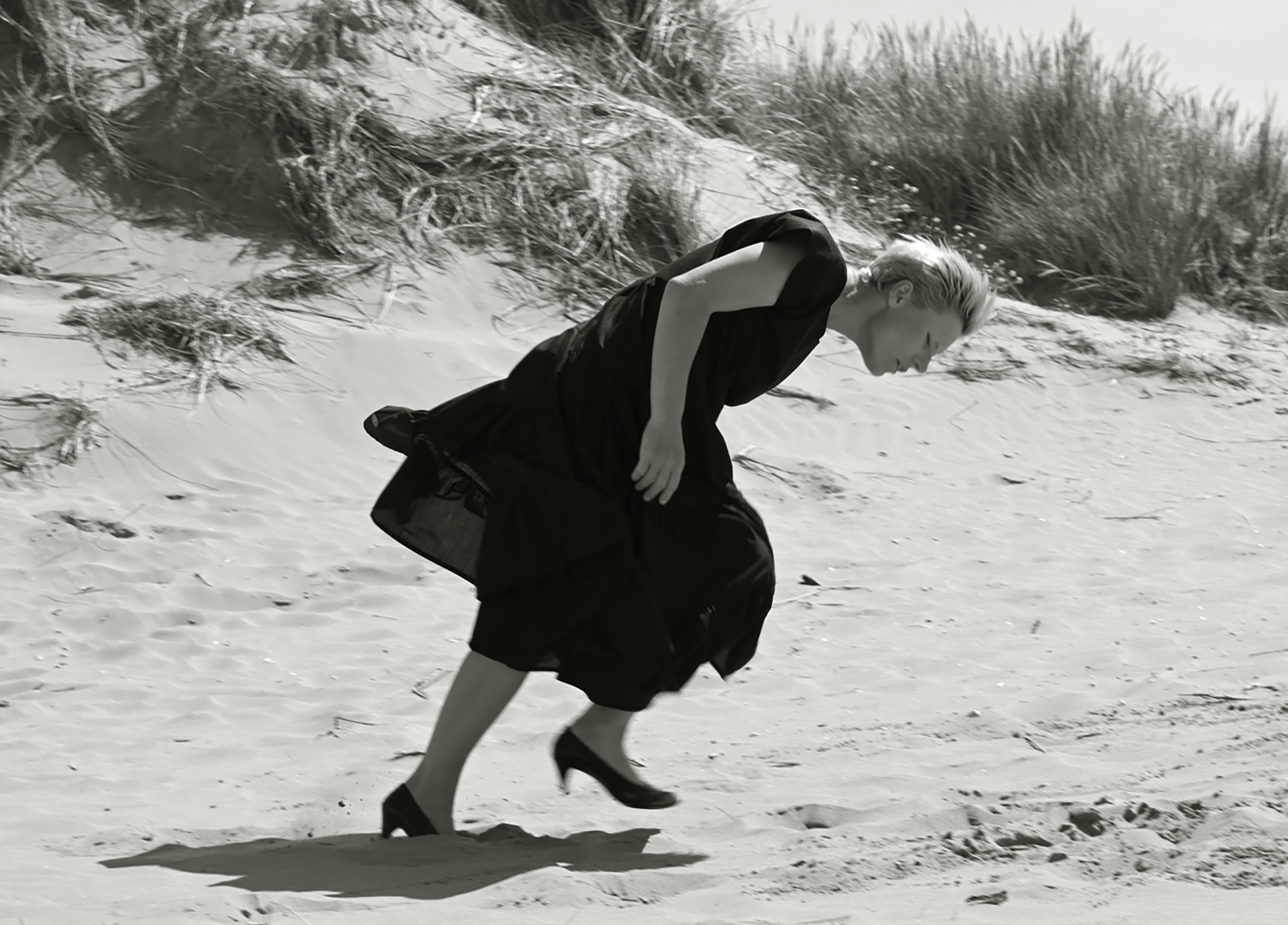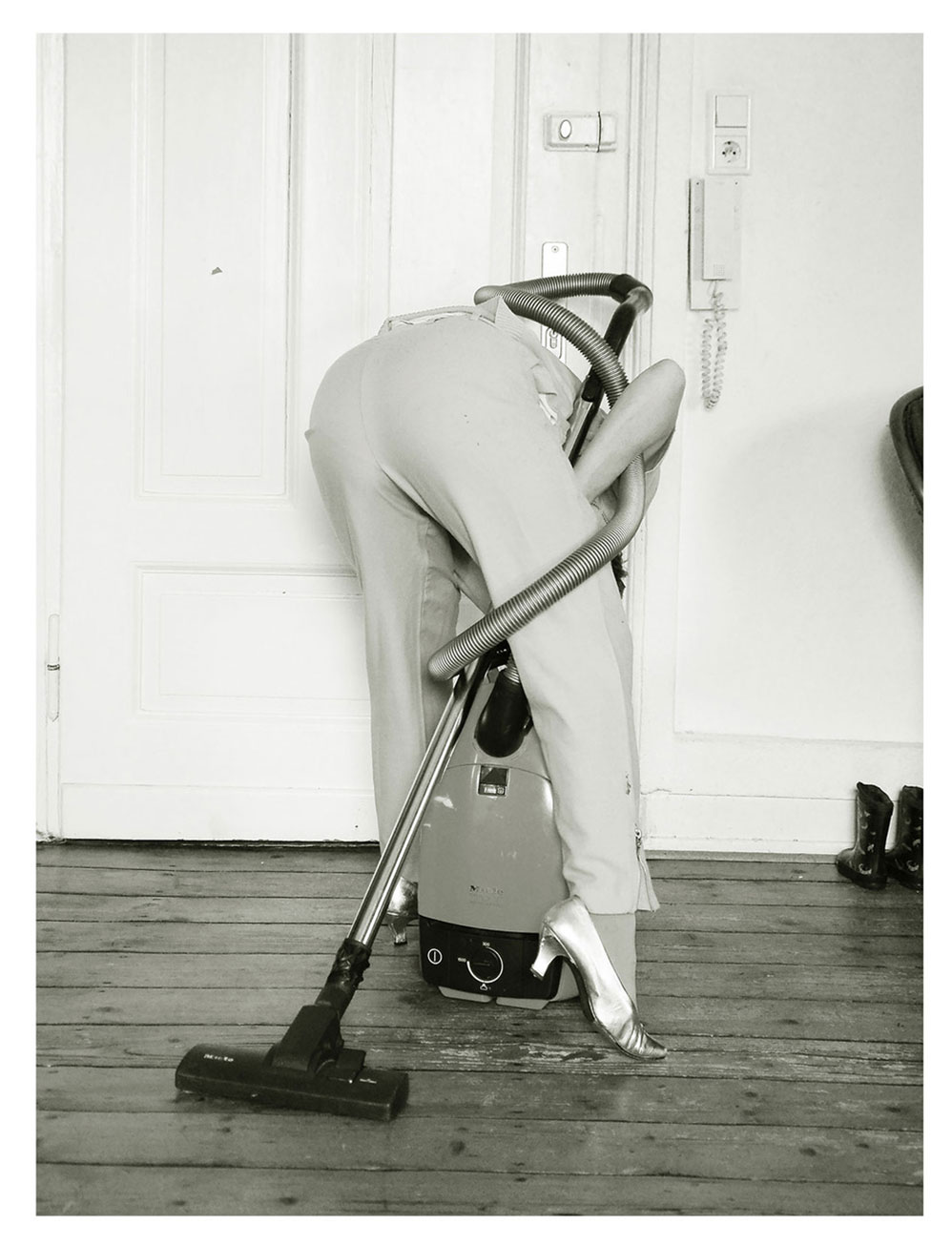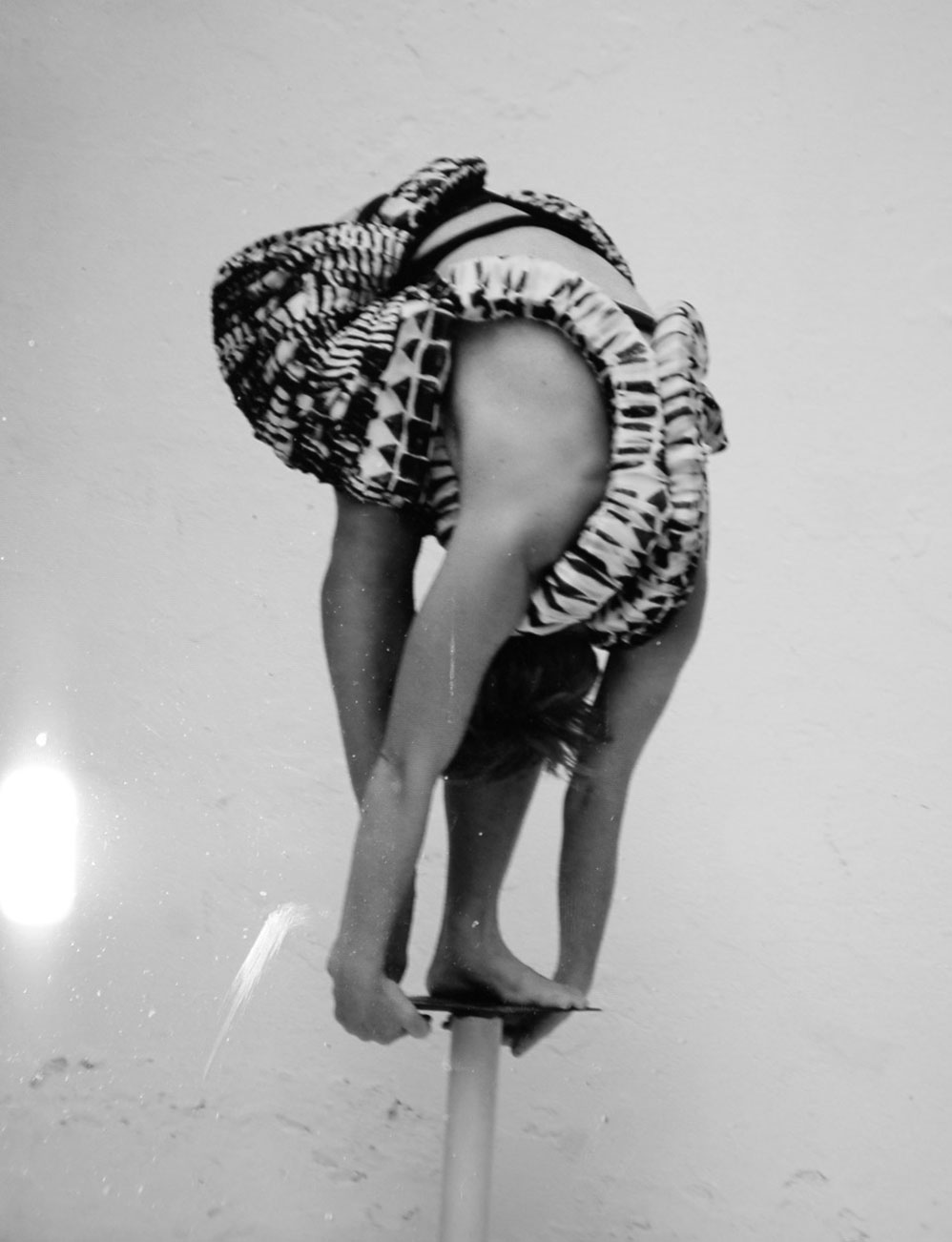When looking at Isabelle Wenzel’s photographs, it is hard not to see the contradiction: her playful subjects appear frozen in impossible positions, yet their bodies suggest fluid motion. Through her lens, Isabelle creates a visual narrative that hints at both the past and future, as she captures movement to evoke imaginary choreographies unfolding across time.
With a background in acrobatics, Isabelle discovered photography almost by chance after a knee injury forced her to take a break. It was while studying arts, that her then-teacher, photographer Paul Kooiker, encouraged her to discover the sculptural possibilities within photography. Quickly after, she realized the only possible subject of her work would be the human body and its movement.
Throughout her life, Isabelle never considered herself a talented dancer, but more of a Buster Keaton. However, after collaborating with performers and dancers to create captivating images, her understanding of dance grew beyond purely physical movement to encompass mental and emotional states—moments of freedom and connection.
Here, she tells us about working with choreographies, movement as a creative device, and combining the flux of dance with the stillness of photography.
This is one of three short interviews exploring the intersection between dance and other creative forms. The feature is also part of Movement, a series of profiles, think pieces, and photo essays exploring creative projects that put motion and fluidity at the center.




“I never thought of myself as talented in dance. I guess I did not understand much about it—it seemed strange to me to learn movements in a row that someone else dictated. Also, I never liked the gender roles often given in dance. So it was never an option for me. When I started to work with professional dancers, I realized that we often spoke the same language and developed ideas the same way. So nowadays, I feel very connected to dance and have become much more aware of my body language. Still, I do not like the idea of repetition. Through dance or any other medium, I like to experience the nowness of being in a particular space at a particular time.”
“At the beginning of my career, everything was about the camera and me—using the self-timer, I photographed myself as a sculpture, fixed movements in impossible postures, and tried to think in various ways about my corporal being in the world. My main recipe is and was trial and error. ”

I believe that there is no creativity without movement. Certainly, it can also be the movement of the mind. Some people dance with their heads and some with their bodies
“I guess after so many years working on the same, the moments of chance became quite limited. I started to control too many aspects. A huge part of the artistic drive is the unknown, so I needed to find a way to give up my control. For the last couple of years, I have been working with dancers, and my husband became my partner in crime. It is hard to tell roles apart. Who is performing, who is directing, and which role does the camera take? And who is creating the image, the person in front of the camera or the one behind? I certainly have a vision of which kind of images or performative moments I like to create, but I also want to question the roles of authorship and try to find solutions for a more dialectic way of working. In the beginning, I was the model, the photographer, and my audience at once. Now, I also think of myself as a director, a choreographer, a movement director, or a performer. And that if I want to, I can be all together or only one of the roles.”
“The balancing act is to have the image already in mind and still be able to forget about everything when taking it. Creating an image is only about this very particular moment, and everything before and after is up to the imagination. It is about running back and forward, jumping, falling, turning, rolling, twisting, looking, and looking back—doing things over and over again and collecting as much as possible. From one idea of movement comes the next, like a causal reaction, and I have no idea where it will end. At a later stage, I edit things on my computer. I like doing this on my own while listening to the same music as during the shoot. I try to get back to the same feelings I had during the shoot. Every good image is like a beautiful surprise–it reminds us of what happened while carrying something within, something unreal and purely imagined.”
“All my inspirations evolve from movement. I am not able to think about something meaningful while sitting on a chair. I guess to be creative, I need to get set into a certain form of movement. It can be sitting on a train, driving a car, walking through nature, going for a run, or being moved by the sound of music. In moments of movement, I am very close to the core of myself. I believe that there is no creativity without movement. Certainly, it can also be the movement of the mind. Some people dance with their heads and some with their bodies.”
In this feature, we explore German photographer Isabelle Wenzel’s relationship with dance and movement, and we get to know more about her process of capturing motion in film. Isabelle’s photographs have been exhibited in Paris, Amsterdam, and Berlin, and have been featured in numerous magazines such as Tank, Dapper Dan, and W Magazine.
Text: Maria Paris
Images courtesy of Isabelle Wenzel










